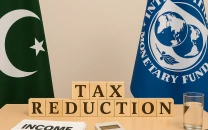Debt-powered darkness
As winter approaches, people ready for outages, businesses for losses, the economy readies for another blow

This country has ample sunlight, water resources and windy locations. Yet, its days remain darkness-prone. As winter approaches for the umpteenth time in the country's history and the country's energy industry appears to remain at the point of death, millions of countrymen are readying for power outages, businesses are getting ready to face losses, and the country's already struggling economy can only absorb yet another blow. The reality is brutal but irrefutable: the energy crisis in the country has transcended the realm of just meeting the demands.
As of the end of 2025, the circular debt in the power generation sector in the country has exceeded 2.7 trillion rupees. This huge number not only reflects arrearages, but a chronic situation carried over for decades. This circular debt refers to the money that circulates between the producers of electricity and the distribution companies, as well as fuel companies and the government. Nobody pays the full amount, nor receives the same, everything depends on connections and who you know. Formal measures in the form of tariffs and power cuts have been going on but no concrete changes have been made.
For the common man in Pakistan, the effects are both immediate and disheartening. In prominent cities, the cuts can last for as long as eight hours in a day. In rural areas, the darkness persists for longer. This isn't a case of occasional power cuts. This is a chronic situation that affects everything from children studying under candlelight to the halt of factory production. In hospitals, the only thing that saves lives and death are generators.
The causes of the crisis are no technical secrets whatsoever. Pakistan depends quite heavily on imported fuel to fuel the electricity generation system. This makes the country susceptible to the fluctuations of the international price regime. Simultaneously, the government has been holding back the payment of funds to the private producers of electricity. This has forced the privatised producers to operate below capacity or even shut down. The distribution companies suffer due to their losses and corruption.
This strain of energy insecurity has become a price-tagged obstacle to development. This slows down the country's industrial production as factories operate at reduced times. This affects the country's farmers as the functioning of tube wells ceases during the peak irrigation season. This cuts the studies of the country's students as power outages increase. This causes the country's communication technology network, already struggling hard, to deteriorate. This affects the country's productivity as the GDP struggles to remain above 3 per cent.
In the end, the most disappointing thing for the general citizenry is the feeling that this has all been going on for a long time. The circular debt crisis has been a crisis for countless years. Yet each new administration comes in and starts anew. The auditing has been proposed and shelved multiple times. Even the privatisation of the power sector has been talked about and ignored. The incentives for solar energy go up and down depending upon the latest mood swings.
Nothing can be achieved without making some hard choices. Arrears should come back to the books openly. Losses in the distribution chain should be reduced. The transition to renewables should become reality. Rather than money, the power sector today demands consistency and capability. The crisis has nothing to do with our lack of electricity. The crisis has everything to do with corruption, nepotism, and our lack of will to manage electricity. Until that happens, however, Pakistan will continue to be a country that has sufficient power to light up its future but prefers living in the dark.
















COMMENTS (1)
Comments are moderated and generally will be posted if they are on-topic and not abusive.
For more information, please see our Comments FAQ